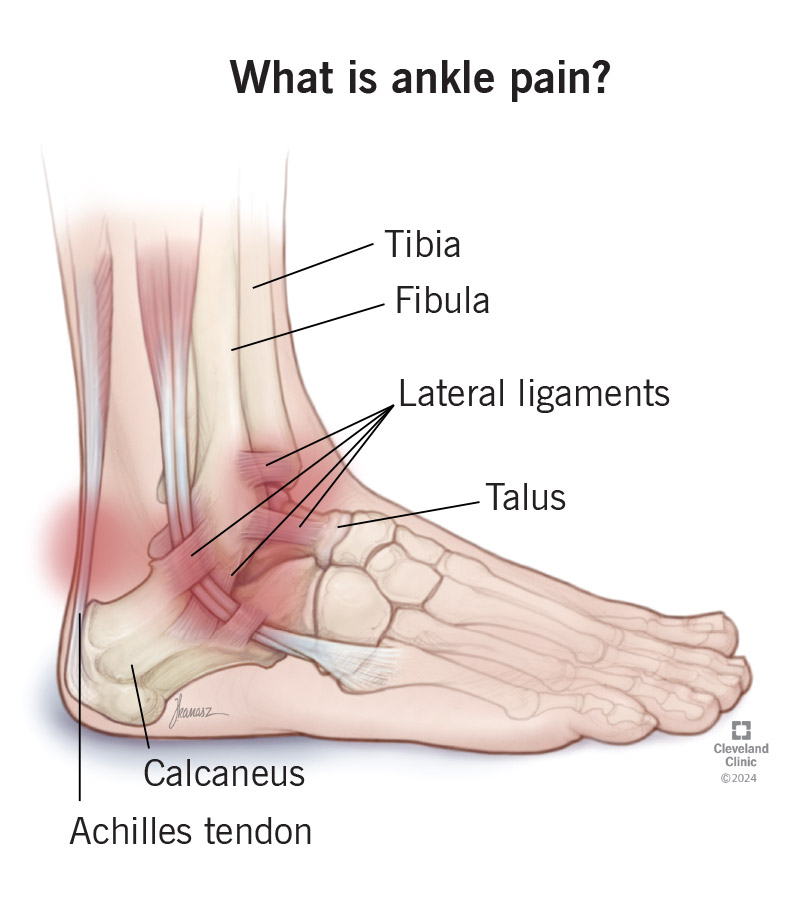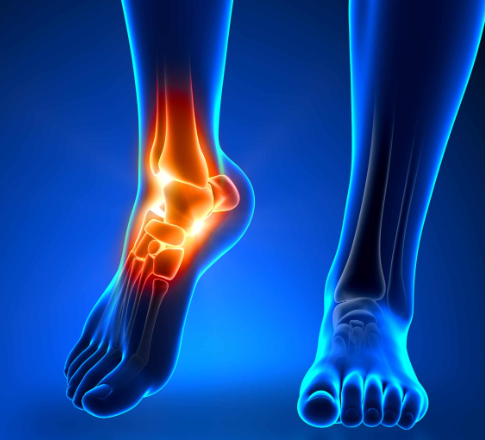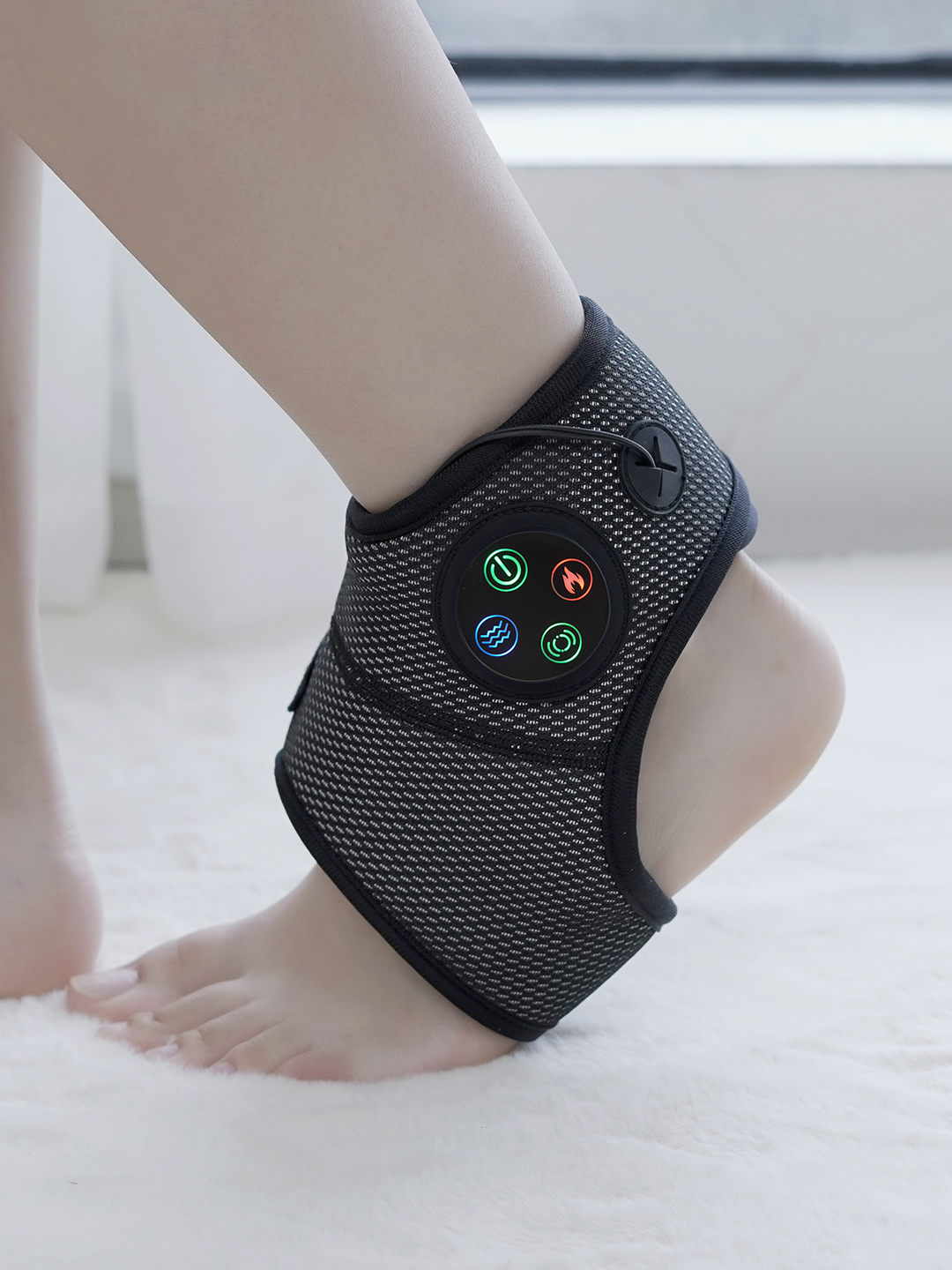Rheumatoid Ankle Massagers: Scientific Benefits vs. Marketing Hype (2025 Guide)
- By Grace
- Updated on
Living with rheumatoid arthritis, especially in the ankles, brings unique challenges – persistent pain, frustrating stiffness, and sometimes unpredictable flares. For many middle-aged and elderly people, finding effective ways to manage these symptoms at home is a constant search. This is where devices like Rheumatoid Ankle Massagers enter the picture, often marketed with promises of significant relief. But in the world of wellness tech, separating genuine therapeutic benefits from appealing marketing can be tricky. Do these Rheumatoid Ankle Massagers truly offer clinical advantages for people with RA, or is the comfort they provide mainly temporary, perhaps influenced by hope? Let's take a look at what's really going on with Rheumatoid Ankle Massagers.
Understanding Ankle Pain in Rheumatoid Arthritis
Rheumatoid arthritis is not just about having a sore joint; it's an autoimmune condition where the body's defense system attacks the lining of the joints. When this happens in the ankles and feet, it causes inflammation, which means swelling, heat, redness, and pain. This inflammation is the main culprit behind the stiffness, especially after resting or waking up. For someone with this condition, activities others take for granted – like simply walking – can become difficult and painful tasks. It’s understandable why people seek tools for ankle therapy for arthritis, leading many to consider Rheumatoid Ankle Massagers.
Unlike typical sprains or overuse injuries, rheumatoid pain comes from this ongoing internal battle. Flares can intensify symptoms dramatically, making joints hot and incredibly sensitive. While medications are crucial for controlling the disease itself and preventing long-term damage, managing the day-to-day discomfort and improving mobility are also vital goals. This is where complementary approaches and devices aiming to relieve ankle pain become appealing, offering a non-pharmacological option for symptomatic ease. Many hope that Rheumatoid Ankle Massagers can play a significant role in this.
- Rheumatoid arthritis is an autoimmune disease causing joint inflammation.
- Inflammation leads to pain, swelling, stiffness, and heat.
- Flares are periods of increased disease activity and symptoms.
- Managing daily pain and stiffness is a key challenge, addressed partly by tools like Rheumatoid Ankle Massagers.


How Rheumatoid Ankle Massagers Claim to Provide Relief: The Mechanisms
From a design perspective, creating devices for comfort often involves incorporating physical modalities known for their soothing effects. Ankle massagers for rheumatoid arthritis, specifically Rheumatoid Ankle Massagers, typically combine several features: heat, vibration, and air compression. The thinking behind including heat is that warmth can help relax muscles and potentially increase circulation, which many find comforting for stiff, aching joints affected by RA. It's a principle used in heat packs and warm baths for centuries, and integrated into devices like Rheumatoid Ankle Massagers.
Vibration is another common feature found in Rheumatoid Ankle Massagers. The gentle buzzing or pulsing can stimulate nerve endings in a way that might interfere with pain signals traveling to the brain, essentially acting as a pleasant distraction or providing a numbing sensation. It can also help release tension in surrounding muscles that might tighten up due to pain associated with rheumatoid arthritis. Air compression uses inflatable chambers that gently squeeze and release the ankle and foot. The idea here is to promote circulation and potentially help reduce mild swelling or simply provide a feeling of supportive pressure that some users find relieving. Some models also add red light therapy, which is based on the theory that certain light wavelengths can penetrate tissues and have therapeutic effects, although its specific role in consumer Rheumatoid Ankle Massagers for deep joint inflammation is still being explored.
- Heat aims to relax muscles and improve local circulation in Rheumatoid Ankle Massagers.
- Vibration can interfere with pain signals and reduce muscle tension, a key function of Rheumatoid Ankle Massagers.
- Air compression provides a squeezing sensation, potentially aiding circulation and feeling supportive.
- Red light is a newer feature with ongoing research into its benefits in devices like Rheumatoid Ankle Massagers.

Scientific Reality vs. "Natural Therapy" Hype of Rheumatoid Ankle Massagers
Here's where we need to be clear. While the mechanisms mentioned above – heat, vibration, and compression – *can* provide temporary, symptomatic relief, the notion that Rheumatoid Ankle Massagers offer "natural therapy" in a way that replaces or significantly impacts the underlying disease process of rheumatoid arthritis is where marketing often stretches the truth. Rheumatoid arthritis requires medical treatment, typically with specific medications, to control the autoimmune attack and prevent irreversible joint damage. A Rheumatoid Ankle Massager does not possess the capability to alter the course of the disease or reduce the inflammatory response at a level needed to prevent joint destruction. This is a critical point regarding the claims surrounding Rheumatoid Ankle Massagers.
Think of it this way: a Rheumatoid Ankle Massager can feel wonderful on a stiff, sore ankle, much like a warm bath or a gentle rub. This relief is real and valuable for comfort, but it's primarily addressing the *symptoms* (pain, stiffness, muscle tension) rather than the *cause* (autoimmune inflammation). Claims suggesting these devices, specifically Rheumatoid Ankle Massagers, can reduce rheumatoid joint damage are simply not supported by current medical understanding or evidence. The primary goal of medical therapy for RA is to achieve remission or low disease activity precisely to prevent that damage. While a Rheumatoid Ankle Massager can be a lovely part of a comfort routine, it is not a disease-modifying treatment or a form of "natural therapy" that replaces conventional medical care for rheumatoid arthritis.
- Rheumatoid Ankle Massagers provide symptomatic relief (pain, stiffness).
- They do not treat the underlying rheumatoid inflammation.
- Claims of reducing joint damage by using Rheumatoid Ankle Massagers are not scientifically supported.
- Medical treatment is essential for controlling disease progression in rheumatoid arthritis.
Prioritizing Features: What's Crucial for Rheumatoid Patients in an Ankle Massager?
When designing something meant to bring comfort and ease to someone dealing with chronic joint pain, functionality and user control are paramount. For rheumatoid patients, the key features in an ankle massager, including Rheumatoid Ankle Massagers, should prioritize gentle, adjustable therapy and ease of use over flashy "smart" capabilities that might not offer tangible benefits for their specific condition. The ability to control heat levels, vibration intensity, and compression strength is far more important than, say, Bluetooth connectivity or complex pre-programmed routines that can't be easily customized for a fluctuating condition like RA. Being able to turn certain features off completely is also crucial, especially the heat or compression during a flare when using Rheumatoid Ankle Massagers.
From a practical standpoint, the Rheumatoid Ankle Massager should be easy to put on and take off, simple to operate with clearly labeled controls (important for middle-aged and elderly people), and comfortable to wear. While advanced features like red light therapy might be interesting, for managing everyday rheumatoid discomfort, the fundamental ability to provide soothing warmth and gentle vibration or pressure on your own terms is what truly matters in a Rheumatoid Ankle Massager. A well-designed ankle rehabilitation device for this audience focuses on reliable, controllable basic functions that support comfort and ease of use, rather than adding unnecessary complexity that doesn't address their core needs for pain relief and stiffness management from rheumatoid arthritis. Look for Rheumatoid Ankle Massagers with these key features.
- Adjustable heat, vibration, and compression are key features for Rheumatoid Ankle Massagers.
- Ability to turn off specific features is important for safe use of Rheumatoid Ankle Massagers.
- Ease of use and clear controls are vital for older adults using Rheumatoid Ankle Massagers.
- Focus on practical comfort over unnecessary smart features when choosing Rheumatoid Ankle Massagers.
Safety First: Using Your Rheumatoid Ankle Massager Wisely
Safety is a major consideration when discussing devices like Rheumatoid Ankle Massagers, and this is often why some doctors might express caution about using them without proper guidance. The risk lies primarily in using the massager during an acute rheumatoid flare. When a joint is hot, swollen, and inflamed, applying heat or vigorous massage/compression from a Rheumatoid Ankle Massager can potentially aggravate the situation, increasing inflammation and pain. This counteracts the very relief the user is seeking and can be genuinely harmful. Understanding this distinction – chronic stiffness vs. acute flare – is critical for safe use of a rheumatic ankle massager or any Rheumatoid Ankle Massagers.
My advice, from the perspective of someone who considers how products interact with users' bodies, is to err on the side of caution with Rheumatoid Ankle Massagers. Avoid using the massager when your ankle is visibly red, hot, or significantly more swollen and painful than usual. These are signs of an active flare. Instead, use the Rheumatoid Ankle Massager during periods of chronic aching or morning stiffness, when gentle warmth and vibration can be most beneficial for easing tension and discomfort. Always start with the lowest settings to see how your body reacts. If you experience increased pain or swelling after using the device, stop immediately and consult your doctor. A responsible approach to using a Rheumatic Ankle Massager involves listening carefully to your body and respecting the signals it sends, ensuring it complements, not complicates, your medical treatment plan for rheumatoid arthritis. Choose and use your Rheumatoid Ankle Massagers wisely.
- Do NOT use Rheumatoid Ankle Massagers during acute rheumatoid flares (hot, swollen, red joints).
- Use Rheumatoid Ankle Massagers for chronic stiffness or aching.
- Start with the lowest settings on Rheumatoid Ankle Massagers.
- Stop use immediately if pain or swelling worsens after using Rheumatoid Ankle Massagers.
- Consult your doctor about safe usage of Rheumatoid Ankle Massagers for your specific condition.
Frequently Asked Questions About Rheumatoid Ankle Massagers
Can ankle massagers reduce rheumatoid joint damage?
No, ankle massagers, including Rheumatoid Ankle Massagers, cannot reduce rheumatoid joint damage. Joint damage in rheumatoid arthritis is caused by chronic inflammation. While massagers can provide temporary relief from pain and stiffness, they do not treat the underlying inflammatory process that causes this damage. Preventing joint damage requires medical treatment to control disease activity.
Why do some doctors discourage the use of ankle massagers?
Some doctors may discourage the use of ankle massagers, such as Rheumatoid Ankle Massagers, primarily due to the risk of misuse, particularly during acute rheumatoid flares. Applying heat, vibration, or compression to a hot, swollen, inflamed joint can potentially worsen symptoms. Doctors also want to ensure patients understand that massagers are complementary tools for comfort, not a substitute for prescribed medical treatment which is essential for managing the disease itself. Safe use of Rheumatoid Ankle Massagers is key.
What features are crucial for rheumatoid patients?
Crucial features for rheumatoid patients in an ankle massager, specifically Rheumatoid Ankle Massagers, include adjustable heat levels (or the option to turn heat off), variable intensity for vibration and compression, and simple, easy-to-use controls. These features allow users, especially middle-aged and elderly people, to customize the massage to their comfort level and safely avoid aggravating sensitive joints, particularly important for an effective ankle rehabilitation device.
Bringing it all together, while the marketing surrounding some Rheumatoid Ankle Massagers might lean towards overstating their therapeutic power, there's a place for these devices in managing rheumatoid arthritis symptoms. They are best viewed not as disease-curing tools or replacements for medical care, but as practical aids for daily comfort. By offering gentle heat, vibration, and compression, a well-designed Rheumatoid Ankle Massager can genuinely help relieve ankle pain and stiffness outside of acute flares. For middle-aged and elderly people seeking simple, effective home comfort as part of their overall ankle therapy for arthritis, choosing a device with the right, controllable features and using it safely can make a meaningful difference in their daily well-being. Realistic expectations, informed choices about features, and consultation with healthcare providers are paramount to harnessing the potential benefits of Rheumatoid Ankle Massagers without falling prey to marketing hype.




